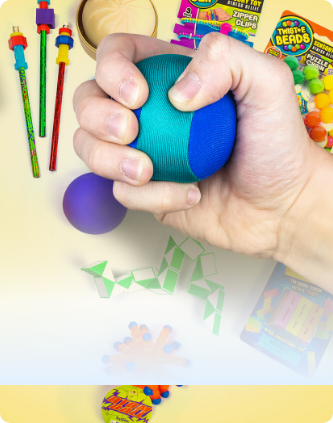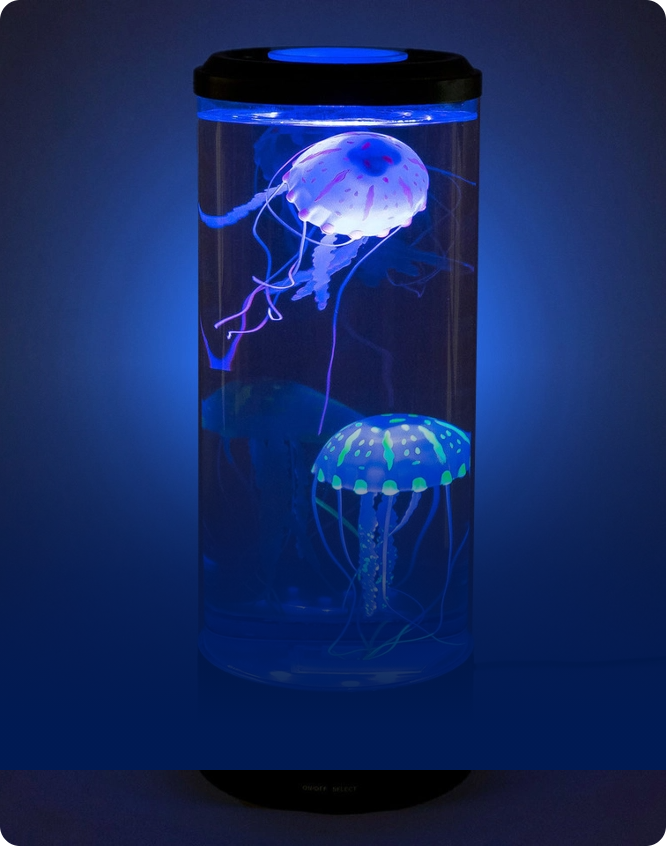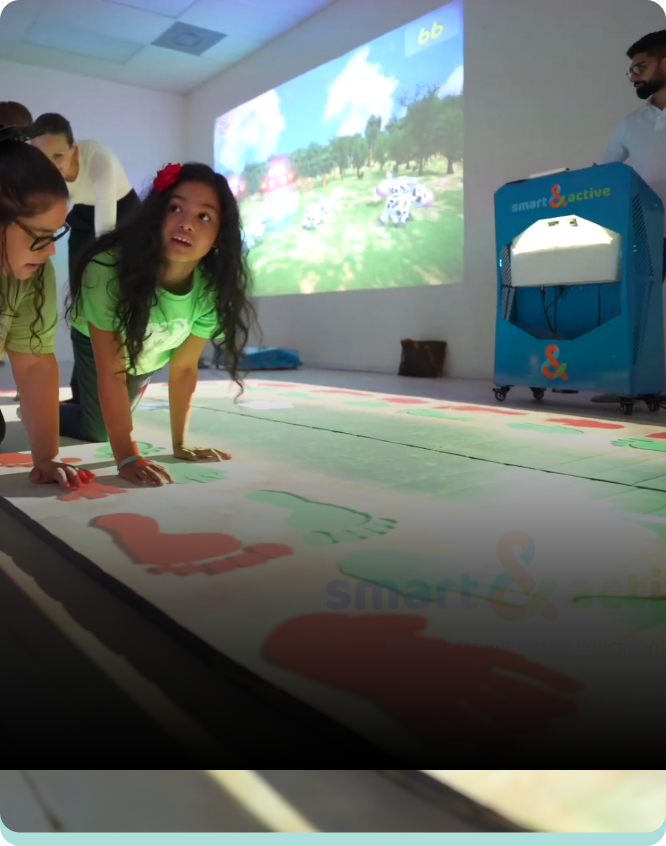What is a sensory room?
Sensory rooms are now common in schools, hospitals and community centers. These rooms use sensory equipment to create a controlled sensory-focused environment. These environments allow sensory experiences to be individually tailored to meet the specific needs of an individual.
Good sensory rooms are well structured so that the amount and intensity of a sensory experience can be easily controlled and monitored. This is essential when using a sensory room to manage overstimulation and stress or to provide sensory integration therapy to individuals with sensory processing challenges.
Too much stimulation can further escalate problem behaviors. Conversely, not enough stimulation can render the experience ineffective.


What is the purpose of a school sensory room?
Sensory rooms can serve multiple purposes. They can promote self-organization, be a calming area, provide leisure, help with sensory integration, or act as skill training centers. They also provide great inclusion spaces that all students can explore together. Since the experiences inside a sensory room are not readily accessible to most students most general education students are highly motivated to participate in inclusion activities inside sensory rooms.
Why have a sensory room and who do they help?
Those with multiple disabilities often have sensory impairments. By controlling sensory input in the room it is possible to eliminate distractions and assist people to attend to specific objects that may help them make sense of their external environment. Cause and effect activities that work with switches or controllers, interactive floors, interactive panels, or equipment with buttons work especially well in these instances.
A well designed room can also serve people of all ages, multiple disabilities, as well as facilitators, teachers, parents, caregivers, and therapists.

Research & Development
What is the Research on Sensory Rooms?
Research on sensory rooms is ongoing. So far studies have shown they are useful for reducing and managing stress and aggression. Therapists have also used the room for “supporting reflective learning during critical incident debriefing” (1, 2, 3, 4, 8) They can also reduce stereotyped/repetitive behaviors in adolescents and adults. (3, 5, 6, 11) Use of the room can also increase attention and focus. (8, 11)
New Developments with Sensory Rooms
As technology continues to evolve, sensory rooms are taking advantage of it. Currently, many facilities are moving from standard projection systems to interactive walls or interactive floor projection systems. These interactive elements can play a wide variety of video loops like a standard projector with the added benefit of offering interactive experiences that can teach academic skills, build gross motor, fine motor, teach cause and effect, and so much more. These systems are replacing the static sound and light panels traditionally found in sensory rooms that only offer a limited amount of interaction and no ability to be upgraded.
Augmentative Reality and Sensory Rooms
Another new development in sensory rooms is the use of augmentative reality and immersive spaces. Our first piece of augmentative reality equipment is the AR Sandbox. The AR sandbox features over 22 immersive experiences that can transform the sandbox into a variety of immersive experiences. One example is a prehistoric landscape where students can build volcanoes and dig water holes from which dinosaurs drink. This equipment is highly engaging and is rewarding for all students to engage with- even those who are tactile defensive!
Immersive Environments are Coming Soon
Using AR technology to transform spaces into immersive environments is also in the developing stages. Imagine walking your student through a forest with animal sounds and birds that will fly toward them as they reach out to interact with the environment. Or imagine sitting on the floor in a boat and floating down a lake as your student uses a virtual paddle to navigate the water. You may choose to walk through a grocery store, add items to your cart, and then practice checking out. The immersive environment opportunities will be endless.
Using Artificial Intelligence (AI) to Enhance the Effectiveness of Sensory Rooms
Currently scientists together with educators are experimenting with AI in sensory rooms. Occupational Therapists are using AI in immersive spaces to build a wide variety of gross motor and fine motor skills. Experiments with analyzing body movement and facial expressions are also taking place with the goal of creating even more effective calming and de-escalation spaces.
A sensory room can also provide these additional benefits:

Creates an Interactive & Comfortable Enviroment
Easily create a safe space students can use to self regulate, explore their environment, or work on sensory integration.

Creates a Safe Crisis & De-Escalation Space
Modulate the environment to prevent over-stimulation or create a calming room designed specifically to provide a safe de-escalation space.

Modulate the Environment in a Controlled Space
Provide controlled spaces that help you create a sensory environment a student is comfortable in and which sensory activities they respond to.
How do schools and mental health facilities use sensory rooms?
Reduce Stress
Reduce Stereotyped/ Repetitive Behaviors
Reduce Aggression
Increase Focus
Motivate Learning
Increase Interaction
Assist with Sensory Integration Therapy
Work on Inclusion and Social Skills
How do you set up a sensory room?
Before designing the room it is important to consider:
The individual needs of the clients who will use the room. What are the ages, cognitive abilities, mobility and educational and sensory needs of the individuals who will use the room?
How many individuals will need to use the room at the same time?
How the room will be used. Will the room be a calming area? Will it be used for therapy sessions including occupational therapy, speech, sensory integration therapy, or one on one instruction?
Who will have access to the room? Will they need training? Will you need to design a room with equipment that does not require special training?
Keep in mind the long term use of the room. If all of your equipment is static, students can become bored. A good goal is to create a flexible space that allows you to create different scenes or moods depending on the emotional, cognitive, and physical needs of the students. How will the room be adapted to meet changing needs and keep it interesting? Projectors, interactive floors and walls can be very helpful with this.
Shop Common Components of a Sensory Room
Common Questions
Why do sensory rooms have bubble tubes?
A common component of many sensory rooms is a bubble tube. It is often placed in a corner with two mirrors installed to give the illusion that there are three bubble tubes instead of one. Usually a platform is built around the tube so that students can sit near the tube and touch it.
Bubble tubes are installed in sensory rooms for a variety of reasons:
- Sensory stimulation- bubble tubes provide visual sensory stimulation. They often have LED lights that change colors and watching the bubbles float up through a variety of lighting effects provides sensory input. Some bubble tubes also have a vibrating component that allows for a multi-sensory experience.
- Calming visual focal point- A common calming activity is to find somewhere to place your attention while you relax and center your mind. Often students will be prompted to focus on their breath, heartbeat, or “visualize” something. However, students that have trouble with abstract concepts have an easier time focusing their attention on an external object. A bubble tube’s rhythmic bubble motion provides a concrete, calming visual focal point.
- Meet IEP or learning goals- some bubble tubes come with switches that allow students to change colors, turn on and off, or change light patterns. Teachers will use these switches to teach a variety of IEP goals including cause and effect, colors, or other attributes such as on and off. (11)
Why do sensory rooms have projectors?
Another common component of many sensory rooms is a projector. Sensory room projectors often have rotator wheels that slowly rotate an image or project images across a room. They are nice to have because you can quickly change the theme of the room by switching out the image.
You can often buy a blank projector wheel and print out images of your own to match a theme, season, or lesson. The slowly rotating images also create a calming visual focal point for those who are anxious, over-stimulated, or stressed.
Do you have to have a bubble tube in a sensory room?
Most assume that if you are going to have a sensory room you must have a bubble tube. This assumption is not true. A bubble tube should be placed in a room based upon the goals of the facility.
What if you can’t afford a bubble tube?
If you can't afford a bubble tube that is OK. You can have a sensory room without one. A bubble tube provides an interesting focal point. You can create an interesting focal point that provides soothing visual movement using an aquarium with fish, a jellyfish lamp, or a projector. Our jellyfish lamp is an affordable alternative to a bubble tube. It works well in sensory rooms, homes, and classrooms.
What color to paint the room?
It is best to paint a sensory room white. This allows different visual effects to show up better when they are projected on a wall. A note about an all white room. Some sensory rooms are completely white with white walls and white soft flooring. This can be a challenge for those with visual impairments. It limits the number of visual cues making it difficult to differentiate between the walls, floor, door, and doorframe. Also this can make keeping the floor clean difficult!
More Set up Tips
- Make sure that you have adequate space between equipment so that students can move freely. Quiet and uncrowded spaces are essential for managing overstimulation and stress. (10)
- Before ordering equipment make sure you have budgeted money for installation. Check to make sure the room is set up with adequate electrical outlets. Depending on the equipment you order, you may need to include a contractor and/or electrician in your budget.
- When designing the layout of your room pay attention to where the electrical outlets are located. You can save a lot of money by simply placing equipment near an existing outlet.
- Smaller areas within a larger sensory room can be created that give students an opportunity to explore objects and people close to them. You can divide up the space using sound sponge dividers or hanging curtains with different materials.
- Windows may need to be darkened if light effects are going to be used. You can cover them with dark paper, use blackout curtains, or install blinds.
- Think about your floor coverings. Some room designs cover the entire floor with wall to wall mats. However, this creates an unstable surface that can be difficult for those with mobility issues to move independently and may limit wheelchair access.
- Carpet: go for plain colors if the floor is highly patterned it will detract from other features in the room and could cause overstimulation. For those prone to sensory overload it is important to provide a blank place to look at.
- Any equipment with a heat source should be positioned where there is plenty of ventilation so that the equipment does not overheat.
Staff Training is a Must
Unfortunately, chaotic and unpredictable environments are sometimes created when a room is poorly designed or personnel are not trained how to properly use the room. It is essential that the support personal understand how to use the room itself, not just the equipment inside it.
It is more important how you use the space not what you have in it. One of the most common mistakes is to go into a sensory room and turn on every piece of equipment. This can be very over stimulating for some. If used incorrectly students can exhibit self-injurious or aggressive behavior. Remember the equipment is only as good as the person using it.
See References
- Brosnan J, Healy O (2011) A review of behavioral interventions for the treatment of aggression in individuals with developmental disabilities. Research in Dev. Disabilities, (2):437-46.
- Champagne, T & Stromberg, N (2004). Sensory approaches in inpatient psychiatric settings: Innovative alternatives to seclusion and restraint (CE Article). Journal of Psychosocial Nursing, 42(9), 35-44.
- Forsyth AS, Trevarrow R (2008) Sensory strategies in adult mental health: A qualitative exploration of staff perspectives following the introduction of a sensory room on a male adult acute ward. Int J Ment Health Nursing, (6):1689-1697.
- Novak T, Scanlan J, McCaul D, MacDonald N, Clarke T. (2012) Pilot study of a sensory room in an acute inpatient psychiatric unit. Australas Psychiatry, (5):401-6.
- Hill, Lindsay; Trusler, Karen; Furniss, Frederick; Lancioni, Giulio (2012) Effects of Multisensory Environments on Stereotyped Behaviours Assessed as Maintained by Automatic Reinforcement. Journal of Applied Research in Intellectual Disabilities, v25 n6 p509-521.
- Novakovic N1, Milovancevic MP2, Dejanovic SD3, Aleksic B4. (2019) Effects of Snoezelen-Multisensory environment on CARS scale in adolescents and adults with autism spectrum disorder. Res Dev Disabil. Jun;89:51-58.
- Case-Smith, J. (2009). Relationships among Psychology, Stress, Behavior, and the Environment. OTJR: Occupation, Participation and Health, 29, 146-147.
- Thompson, C. (2011). Multi-Sensory Intervention Observational Research. International Journal of Special Education , 26, 202-214.
- Price O, Baker J, Bee P, Lovell K. (2018) The support-control continuum: An investigation of staff perspectives on factors influencing the success or failure of de-escalation techniques for the management of violence and aggression in mental health settings. Int J Nurs Stud. Jan;77:197-206.
- Oostermeijer, S., Brasier, C., Harvey, C., Hamilton, B., Roper, C., Martel, A., ... & Brophy, L. (2021). Design features that reduce the use of seclusion and restraint in mental health facilities: a rapid systematic review. BMJ open, 11(7), e046647.
- Unwin, K. L., Powell, G., & Jones, C. R. (2022). The use of Multi-Sensory Environments with autistic children: Exploring the effect of having control of sensory changes. Autism, 26(6), 1379-1394.
- Habbak, A. L. Z., & Khodeir, L. (2023). Multi-sensory interactive interior design for enhancing skills in children with autism. Ain Shams engineering journal, 14(8), 102039.
Want to print a copy of this page?
Print-Friendly .PDF





















